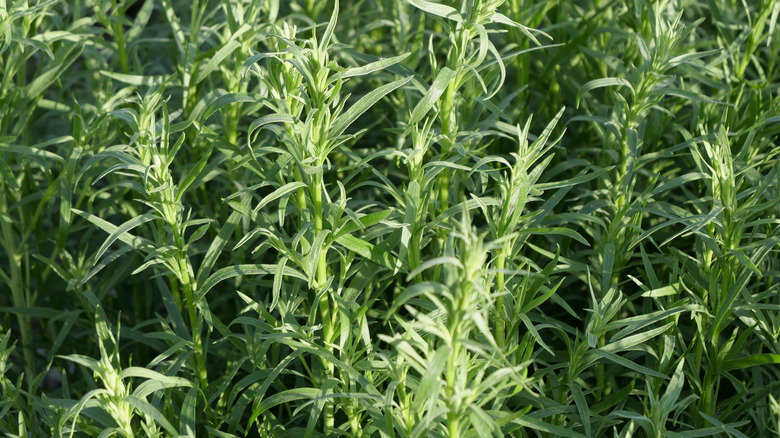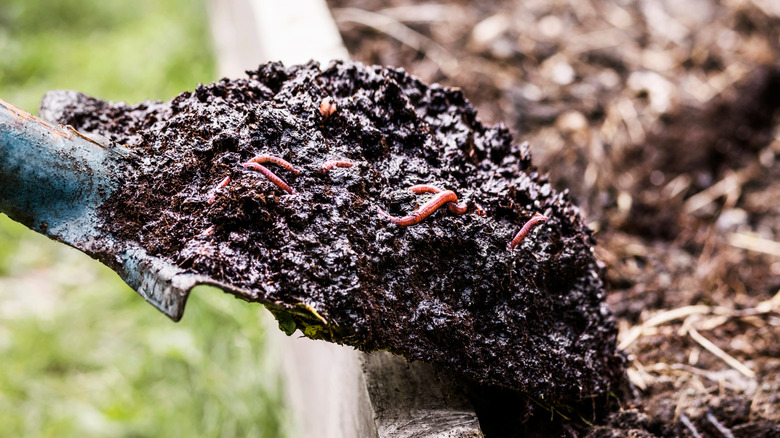Is Gravel The Secret To Thriving Tarragon? Read This Before Attempting The Hack
French tarragon (Artemisia dracunculus var. sativa), the flavorsome herb that enhances chicken and fish dishes, is especially susceptible to root rot. Most plants benefit from well-drained soil, but for tarragon, it's essential. If your soil doesn't drain well, you may be tempted to try a common hack — placing gravel at the bottom of pots or mixing gravel into garden beds. Unfortunately, this hack doesn't work. Coarse materials like gravel actually make it harder for water to drain from pots or garden beds. In pots, much of the water remains above the gravel and close to the roots, increasing the risk of root rot.
Whether you're growing tarragon in containers or a garden bed, adding organic material to your soil is the best way to improve soil drainage. Proper drainage is important for plants and is largely determined by the amount of space between soil particles — known as pores. The more pores the soil has, the better its drainage. Adding organic material creates more pores.
Drainage is key to a thriving tarragon plant.
Good organic materials for improving drainage for your tarragon plants include shredded leaves, compost, sawdust, bark mulch, and aged manure. Spread about two to three inches of organic material on your tarragon bed and integrate it into the soil up to a depth of about six inches. For potted tarragon, use a potting-soil mix with about 30% organic material mixed in before planting.
You'll also want to prevent soggy roots by ensuring the pots for your container tarragon have drainage holes and allowing the soil to dry out between waterings. Avoid overwatering, which not only increases the risk of root rot but also dilutes the flavor of the tarragon. Root rot is not easy to deal with once it sets in, but it can be done. The most important thing is to keep your tarragon's roots dry and happy by using organic matter — and skip the gravel.

